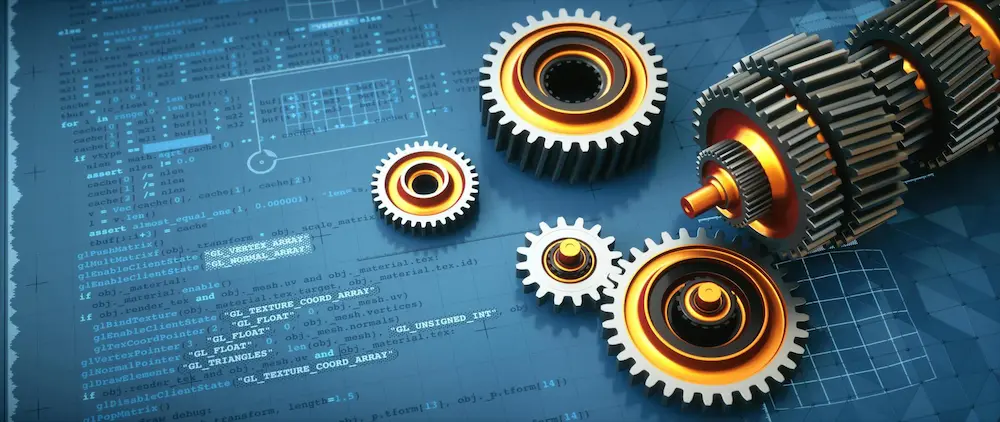In today’s rapidly evolving food industry, staying competitive requires more than just quality products; it demands innovation and efficiency in every aspect of production. One crucial area where innovation plays a significant role is in CAD (Computer-Aided Design) designing. CAD technology has revolutionized the way equipment and packaging are designed in the food industry, offering unparalleled benefits in terms of efficiency, customization, and cost-effectiveness.
Benefits of CAD Designing in Food Industry
Increased Efficiency in Equipment Design
CAD drafting services allows engineers and designers to create, simulate, and analyze equipment designs with precision and speed. This leads to the development of more efficient machines for food processing, reducing production time and optimizing resources.
Enhanced Product Packaging Design
CAD enables the creation of intricate and functional packaging designs tailored to the specific needs of food products. Whether it’s ensuring proper sealing, optimizing space, or enhancing shelf appeal, CAD facilitates the development of packaging that not only protects but also promotes the product effectively.
Cost-effectiveness
By streamlining the design process and minimizing errors, CAD helps in cost reduction throughout the production cycle. From initial design iterations to final manufacturing, CAD technology saves time and resources, making it a cost-effective solution for food industry professionals.
CAD Applications in Equipment Design
Machinery Design for Food Processing
CAD software enables the creation of complex machinery used in food processing, such as mixers, blenders, and packaging machines. These designs can be optimized for efficiency, hygiene, and ease of maintenance, ensuring smooth operations in food manufacturing facilities.

Customized Equipment for Specific Needs
One of the key advantages of CAD designing and drafting services is its ability to customize equipment according to the unique requirements of different food products and production processes. Whether it’s adjusting dimensions, materials, or functionalities, CAD allows for precise tailoring to achieve optimal performance.
Optimization for Space and Functionality
CAD enables engineers to design equipment that maximizes space utilization while maintaining functionality. This is particularly important in food processing facilities where space is often limited, and efficient layout can significantly impact productivity.
CAD Applications in Packaging Design
Innovative Packaging Designs
CAD software facilitates the creation of innovative packaging designs that stand out on the shelves and attract consumers’ attention. From unconventional shapes to interactive features, CAD opens up possibilities for creativity and branding in food packaging.
Customization for Branding and Marketing
With CAD, food manufacturers can create packaging that reflects their brand identity and communicates their product’s unique selling points effectively. Customization options include colors, logos, and messaging, allowing for consistent branding across product lines.
Compliance with Food Safety Regulations
CAD ensures that packaging designs meet stringent food safety regulations by allowing for thorough testing and analysis. From ensuring proper sealing to preventing contamination, CAD helps in designing packaging that complies with industry standards and protects consumers’ health.
Challenges and Solutions
Complexity in Designing Equipment
While CAD offers numerous benefits, designing equipment for the food industry can be complex due to factors such as hygiene standards, regulatory compliance, and the need for specialized functionalities. However, by leveraging CAD tools and expertise, these challenges can be overcome through meticulous design and testing.
Addressing Food Safety Concerns
Food safety is paramount in the food industry, and any equipment or packaging design must prioritize hygiene and sanitation. CAD allows for thorough testing of designs to identify and address potential hazards, ensuring that the final products meet the highest standards of safety and quality.
Integration with Other Systems
In modern food production facilities, equipment and packaging designs need to integrate seamlessly with other systems such as automation, logistics, and quality control. CAD facilitates collaboration and integration by providing detailed designs that can be easily shared and adapted across various platforms.
Future Trends in CAD Designing for Food Industry
3D Printing for Equipment Prototyping
The adoption of 3D printing technology in CAD designing enables rapid prototyping of equipment, allowing manufacturers to test and iterate designs quickly. This accelerates the innovation process and reduces time-to-market for new food processing machinery.
AI Integration for Design Optimization
Artificial intelligence (AI) is increasingly being integrated into CAD software to optimize designs based on various parameters such as performance, cost, and sustainability. AI algorithms can analyze vast amounts of data to generate design solutions that are efficient, reliable, and environmentally friendly.
Sustainability in Packaging Design
As sustainability becomes a key concern for consumers and regulators, CAD is playing a crucial role in designing eco-friendly packaging solutions. From using recyclable materials to optimizing packaging dimensions for reduced waste, CAD helps in creating sustainable packaging that meets both environmental and business objectives.

Conclusion
CAD designing has become indispensable in the food industry, revolutionizing equipment and packaging design processes. By leveraging CAD technology, food manufacturers can achieve increased efficiency, enhanced product quality, and compliance with regulatory standards. As technology continues to advance, CAD will play an even more significant role in shaping the future of food production, driving innovation, and sustainability.
FAQs
- Is CAD designing only for large food manufacturing companies?
- No, CAD technology is accessible to businesses of all sizes and can be customized to meet specific needs and budgets.
- Can CAD software simulate real-world conditions for equipment testing?
- Yes, modern CAD software allows for simulation and analysis of various factors such as stress, heat, and fluid dynamics to ensure equipment designs meet performance requirements.
- How can CAD help in reducing packaging waste?
- CAD enables designers to optimize packaging dimensions and materials, minimizing waste while maintaining product integrity and appeal.
- Are there any limitations to using CAD in the food industry?
- While CAD offers numerous benefits, challenges such as data security, training requirements, and software compatibility may need to be addressed.
- What are some emerging trends in CAD technology for the food industry?
- Emerging trends include the use of virtual reality for design visualization, advanced materials for 3D printing, and AI-driven design optimization algorithms.
